Spy Games for Kids: Fun Missions, Party Ideas, and Creative Activities
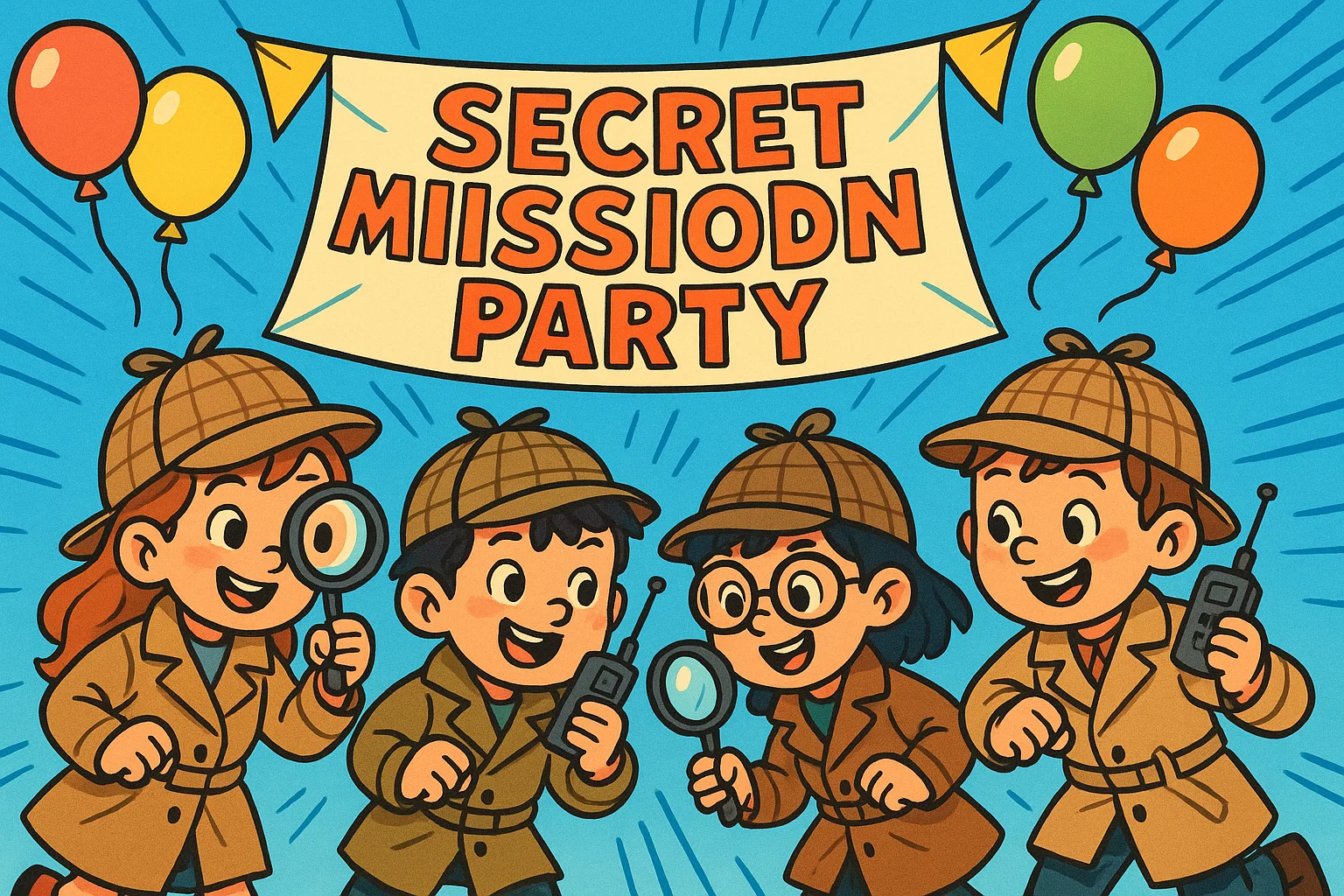
Few things spark a child’s imagination like secret agents and covert missions. A hidden message or top-secret puzzle can turn an ordinary day into an adventure. Spy games go beyond fun—they boost creativity, problem-solving, teamwork, and keep kids active. This guide shares the benefits of undercover play and offers ideas for every age and occasion.
Why Spy Games Are Great for Kids
Spy activities are an excellent tool for development because they naturally integrate fun with fundamental life skills. They turn essential cognitive and physical abilities into a thrilling quest, making children eager to participate and improve. From cracking codes to evading “laser” traps, these missions build confidence and a sense of accomplishment.
Development of logic and problem-solving
A large part of being a good spy is being a great puzzle solver. Think about a secret agent movie: the hero is always deciphering a complex code or solving a riddle to unlock a secret. Similarly, agent missions for kids are full of these kinds of challenges. Whether it’s a simple cipher or a set of riddles, these activities strengthen a child’s critical thinking skills. They learn to analyze information, connect seemingly unrelated clues, and use logical deduction to reach a solution.
Boosting attention and memory
A spy needs to be highly observant and have an incredible memory. Playing secret agent games, such as observing a room for a specific object or remembering a sequence of steps for a mission, can significantly sharpen a child’s focus. These activities encourage them to pay close attention to their surroundings and to retain details. This skill, often called attentional control, is crucial for both school success and everyday life.
Encouraging teamwork and communication
Many spy missions require a team effort. A group of undercover agents might need to work together to complete a task, with one child acting as a lookout while another deciphers a code. This type of collaborative play strengthens social skills, teaches compromise, and highlights the importance of communication. Kids learn how to express ideas clearly and listen to others, which are vital components of successful teamwork.
Screen-free active fun
In an age dominated by digital entertainment, spy adventures offer a refreshing break from screens. These activities, from an obstacle course to a simple game of hide-and-seek with a twist, promote physical activity and encourage imaginative play. They get kids moving and using their imagination in ways that screens simply can’t match.
Classic Spy Games for Kids
These tried-and-true spy activities are great starting points for any mission and can be easily adapted for any age.
I Spy Game
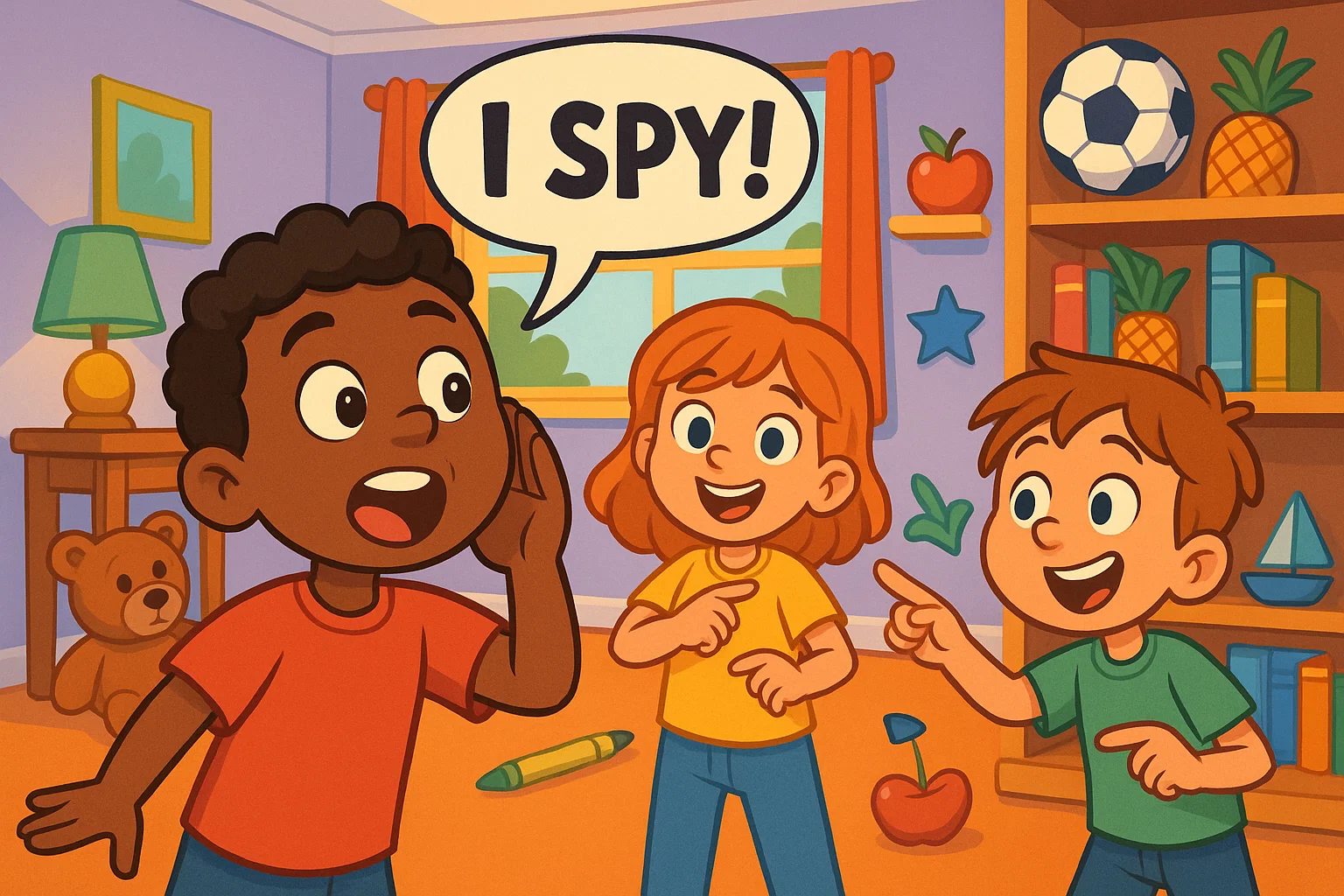
This is a timeless favorite for a reason. The rules are simple: one person says, “I spy with my little eye, something…” and then gives a clue, such as a color or shape. This is an excellent activity for toddlers and preschoolers (ages 2–5) to practice observation skills and learn about colors and objects.
Secret Message Relay
This activity is perfect for a group. The “headquarters” gives a secret message (like a funny sentence or a mission brief) to the first spy. That player must silently relay the message through a series of actions, whispers, or drawings to the next, and so on. The goal is to see how much of the original message survives the relay. This detective-style game boosts communication skills in a silly, entertaining way.
Invisible Ink Missions
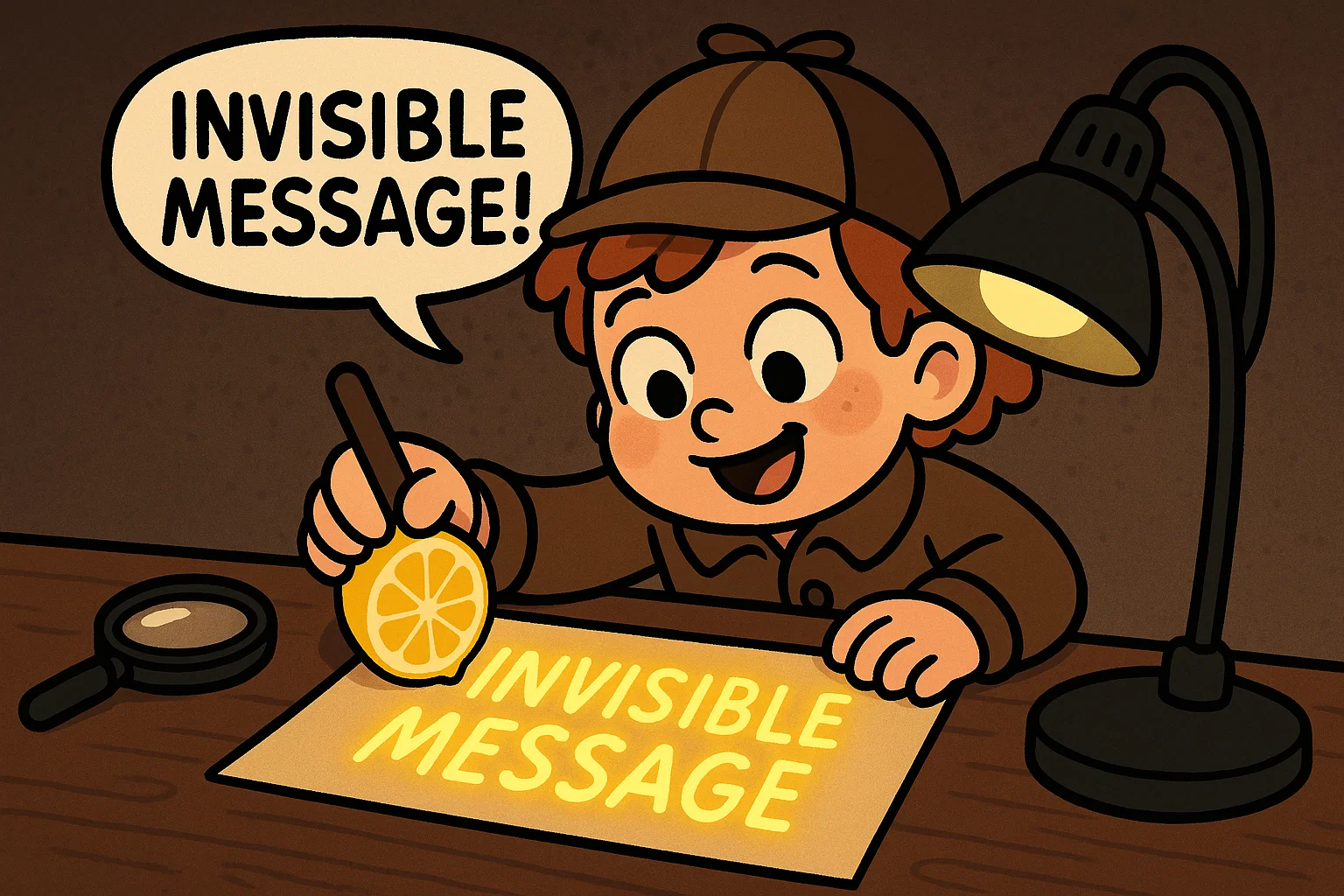
Creating secret messages with invisible ink is a cornerstone of any good spy mission. Here are a few ways to do it at home:
- Lemon Juice: Write your message on white paper with a cotton swab or a Q-tip dipped in lemon juice. Once dry, the message will be invisible. To reveal it, an adult can carefully heat the paper with an iron or a hair dryer, and the message will magically appear as the juice oxidizes.
- Baking Soda and Water: Mix equal parts baking soda and water. Write with the solution and let it dry. To reveal the message, brush over the paper with a Q-tip dipped in grape juice. The acid in the juice reacts with the baking soda to change its color.
- Invisible Ink Pens: For a simpler, less messy option, you can purchase invisible ink pens. They often come with a built-in UV light to reveal the writing, giving kids a high-tech feel.
Treasure Hunt with Clues
Give the classic scavenger hunt a spy twist! Instead of simple directions, use riddles, coded messages, or maps with secret symbols to lead kids to a “stolen” treasure or a hidden safe house. For younger kids, you can use picture clues. For older kids, you can use a complex code they need to decipher.
Code Words and Symbol Codes
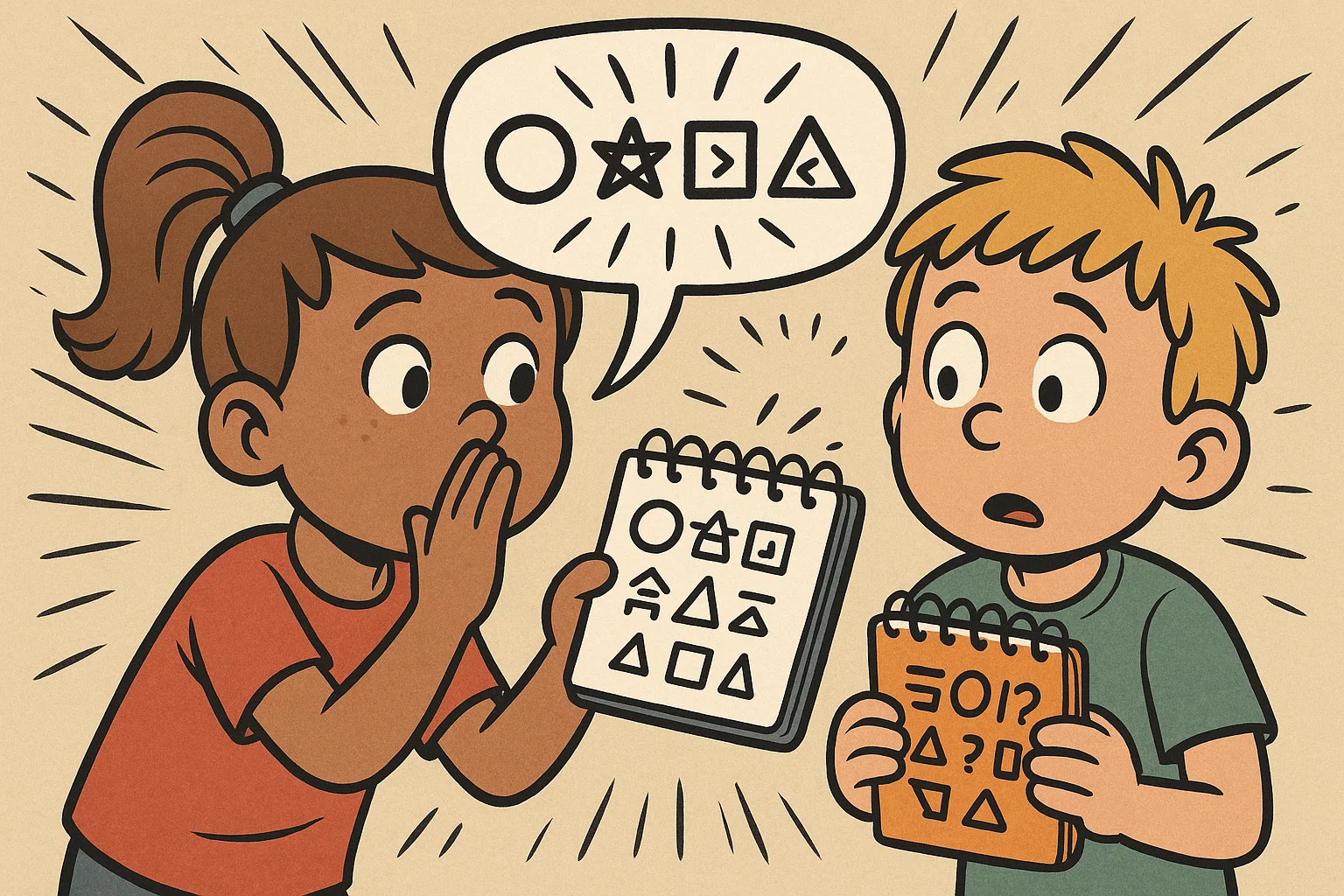
Creating and cracking codes is a great way to introduce kids to the concept of encryption. Here are some simple ideas:
- Substitution Cipher: Assign a number or a different letter to each letter of the alphabet (e.g., A=1, B=2).
- Symbol Code: Create a simple symbol for each letter of the alphabet. This is a great way to use their creativity!
- Backwards Talk: Write messages where words are spelled backward.
- Morse Code: Introduce the concept of Morse code (dots and dashes) to older kids for a more advanced challenge.
Spy Games by Age Group
To make sure your spy mission is a success, it’s important to tailor the difficulty to the age of your agents.
Games for Toddlers (2–4 years)
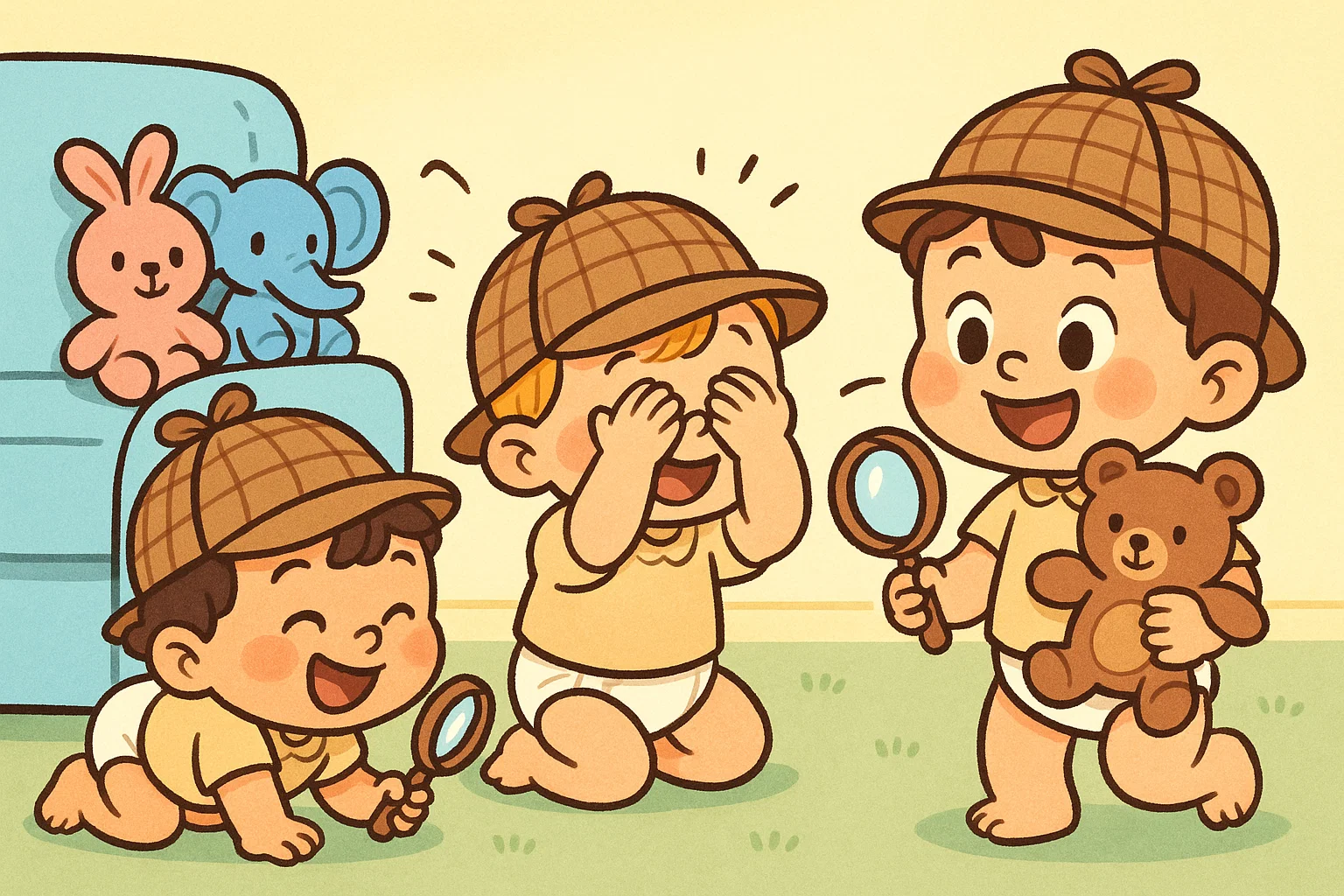
At this age, focus on simple concepts like observation and recognition.
- Find the Hidden Object: Hide a brightly colored toy or “top-secret document” in a room and have your toddler find it.
- The Quiet Spy: Challenge them to sneak from one end of a room to the other as quietly as possible.
- Color-Coded Mission: Give them a mission to collect all the red objects in the room and put them in a secret agent briefcase.
Games for Preschoolers (5–6 years)
Preschoolers can handle short, goal-oriented missions.
- Mini Obstacle Course: Set up a simple obstacle course with pillows to climb over, blankets to crawl under, and chairs to weave between. This is an excellent way for them to practice balance and coordination.
- Memory Challenge: Place 5–10 small objects on a tray. Let the kids study the tray for 30 seconds, then cover it with a cloth. The goal is to remember and list as many objects as they can.
- ID Cards: Create printable spy ID cards with a photo, a name, and a mission specialty (e.g., “Codebreaker” or “Master of Disguise”).
Games for Elementary Kids (7–10 years)
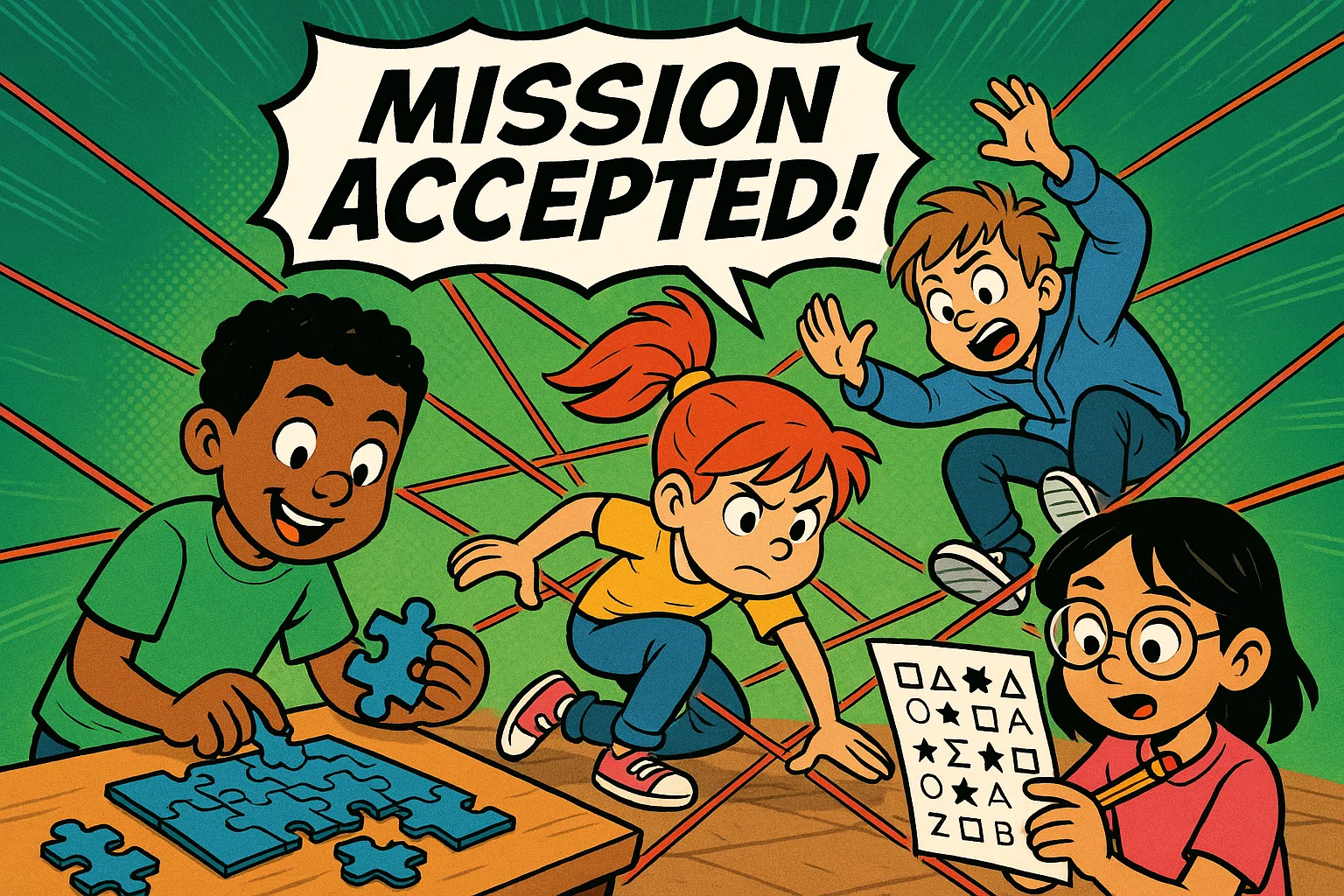
This is the golden age for elaborate spy adventures. Kids can handle more complex plots, codes, and team dynamics.
- Spy Scavenger Hunt: Use a mix of coded messages, riddles, and hidden clues to lead kids to a secret location or a “treasure.”
- “Capture the Flag” Spy Edition: Play the classic game, but add a spy twist. To “capture” the flag, a team must also solve a simple puzzle or decipher a short riddle at the enemy base.
- Disguise Games: Have kids collect various props (hats, sunglasses, scarves) and use them to “disguise” themselves to avoid being caught by the “enemy agent.”
Games for Tweens and Teens
Tweens and teens will enjoy a higher level of complexity and competition.
- Escape-Style Mission: Create a series of puzzles that lead to a final “unlock” to escape a room or complete a mission.
- “Spy vs. Spy” Teams: Divide into two teams. One team creates a difficult code for the other team to crack. The first team to crack the other’s code wins.
- Real Spy Mission: Use online resources to create a more advanced puzzle using ciphers like the Caesar cipher or a Vigenère cipher.
Outdoor Games
When the weather is nice, take the mission outside! These activities are great for a park, a backyard, or even a picnic.
Laser Maze Escape
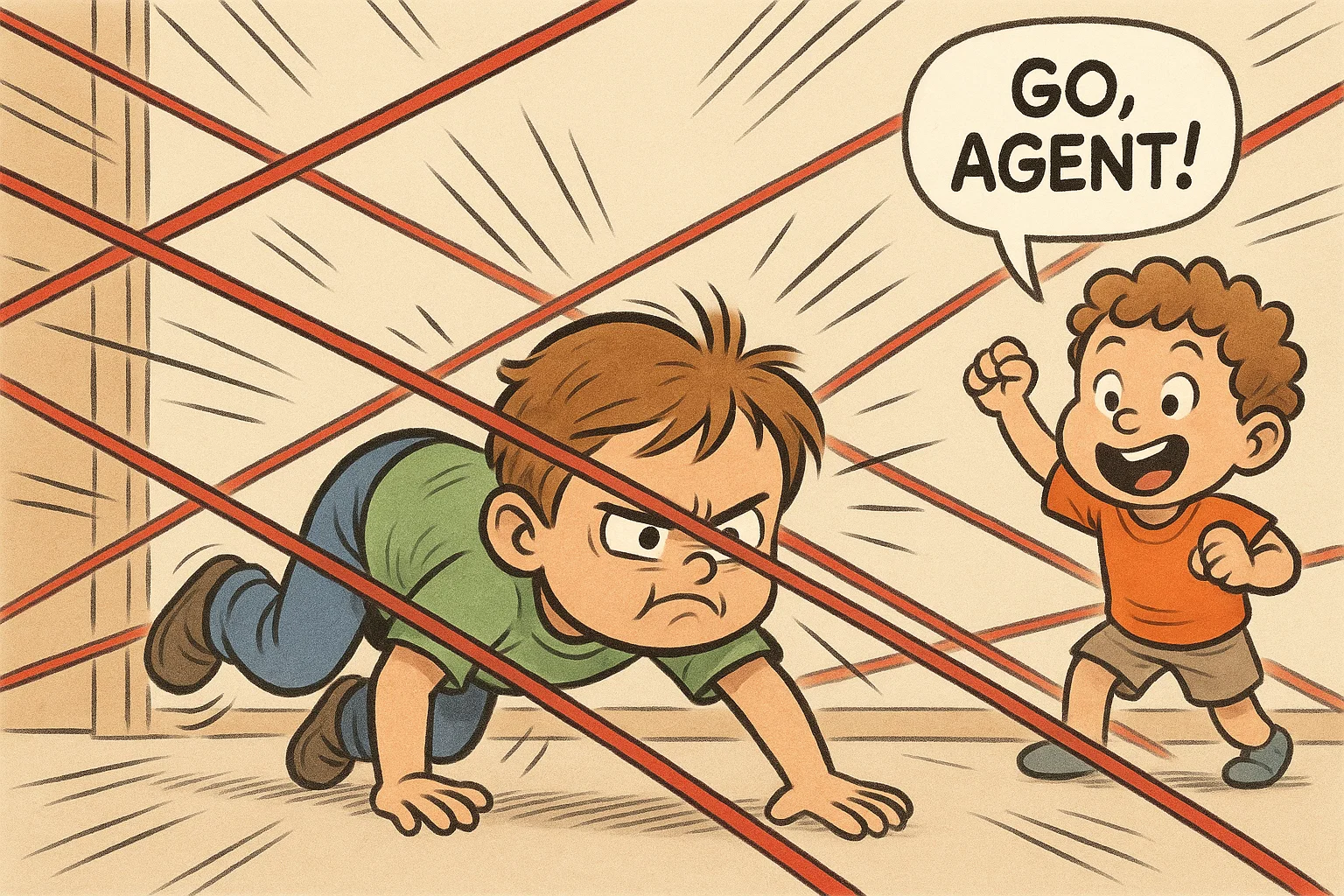
Use red yarn or string to create a “laser maze” between trees or chairs. The goal is for a spy to cross without touching the “lasers.” This is a fantastic way to develop body awareness and spatial reasoning.
Capture the Flag
This game works best with at least two teams. Each team hides a “secret document” in their territory. The mission is to capture the other team’s document and bring it back to their base without getting tagged. You can add a rule that players can only move when the “spy boss” isn’t looking, adding a stealth element.
Disguise Relay Race
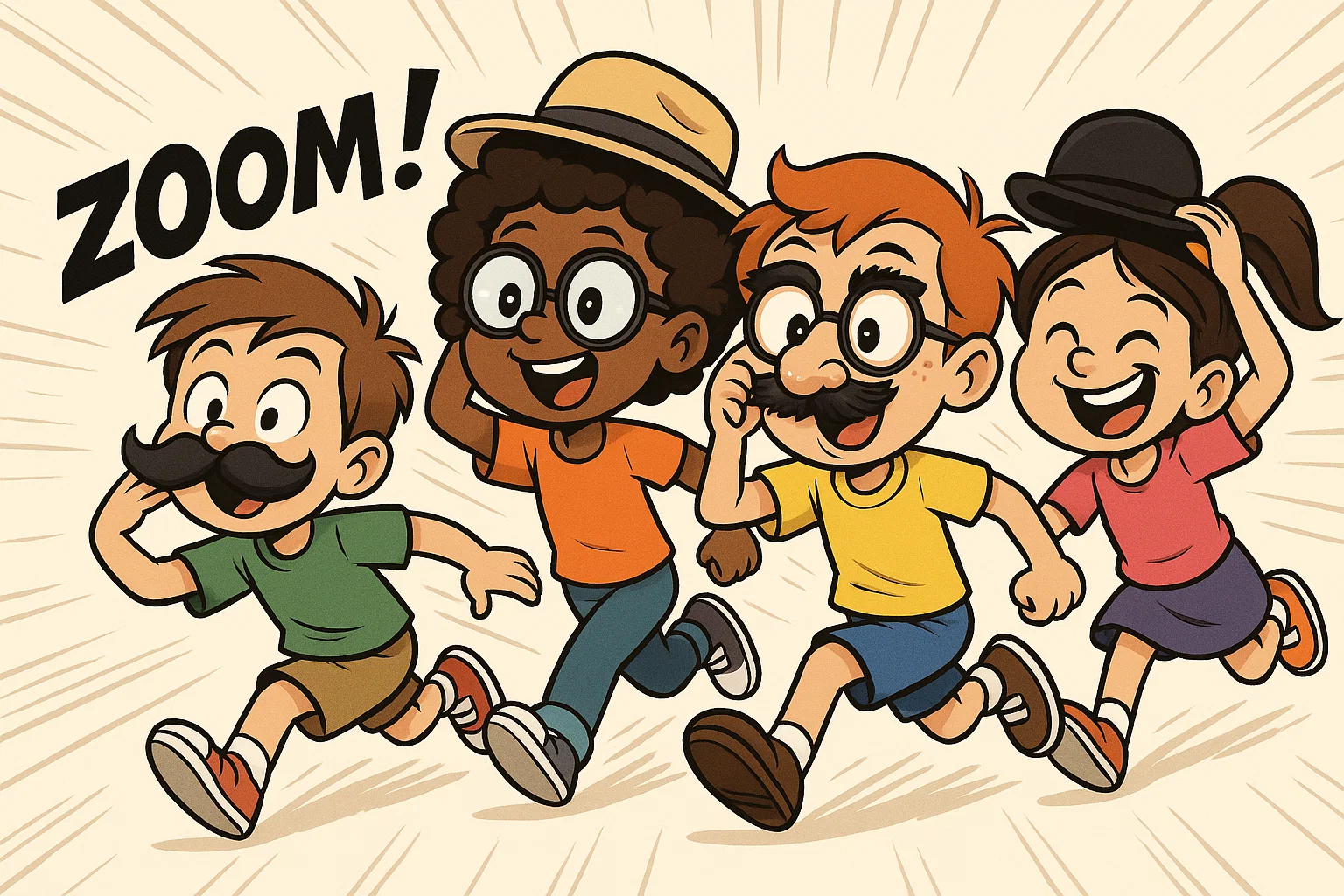
Set up a course with stations. At each station, an agent must put on a different disguise item (hat, sunglasses, fake mustache) before they can continue. The first team to have all their members complete the course wins.
Indoor Spy Games
Rainy days can still be action-packed with these indoor missions.
Silent Spies
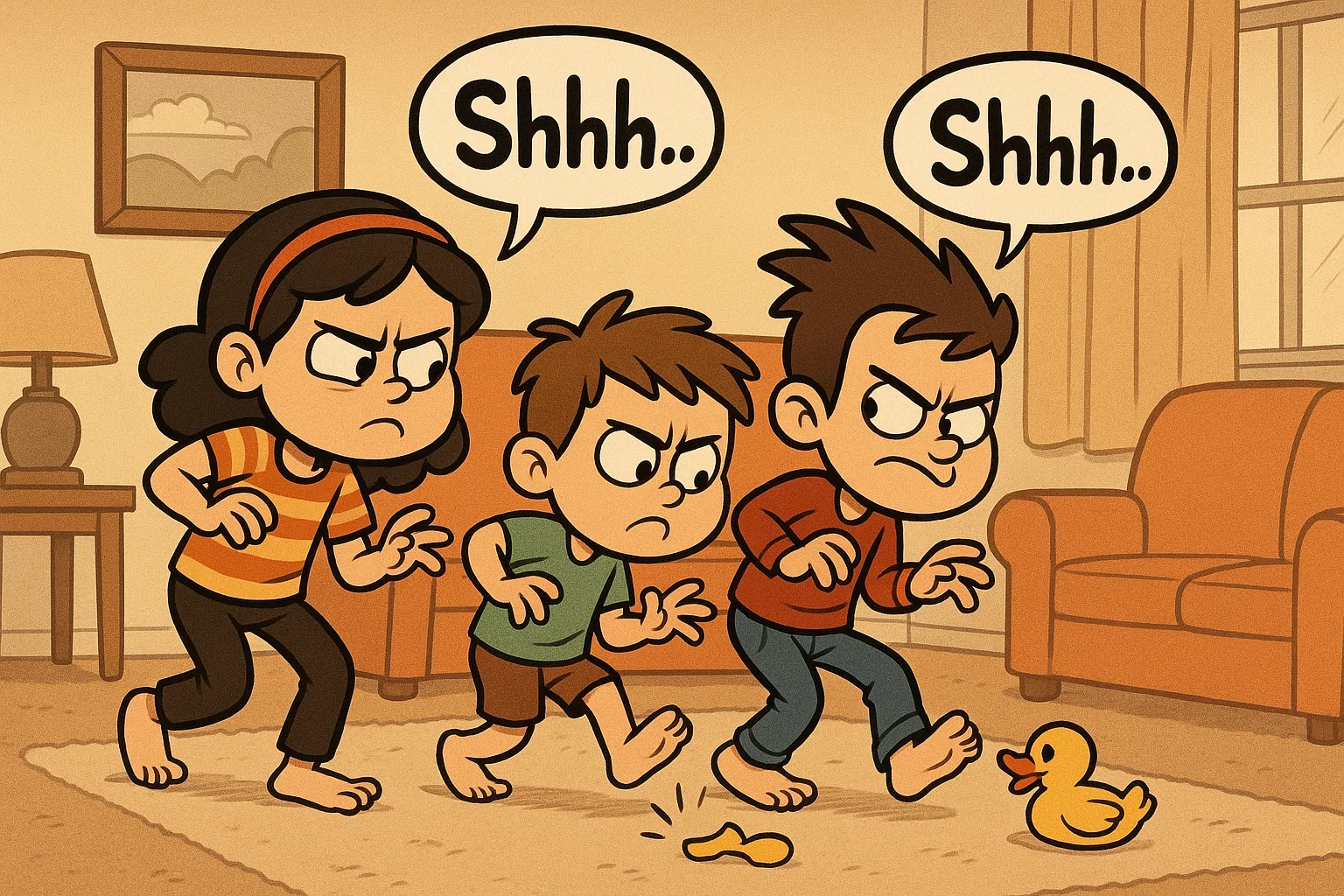
This is a fun game of stealth. One player is the “guard” and stands with their back to the other players. The spies must try to sneak up on the guard. If the guard hears them, they turn around. The agents must freeze. The goal is to be the first to reach the guard without being caught.
Spy Charades
Act out famous spies, gadgets, or mission scenarios without speaking. This is a great way to use imagination and body language to get the message across.
Puzzle Tournament
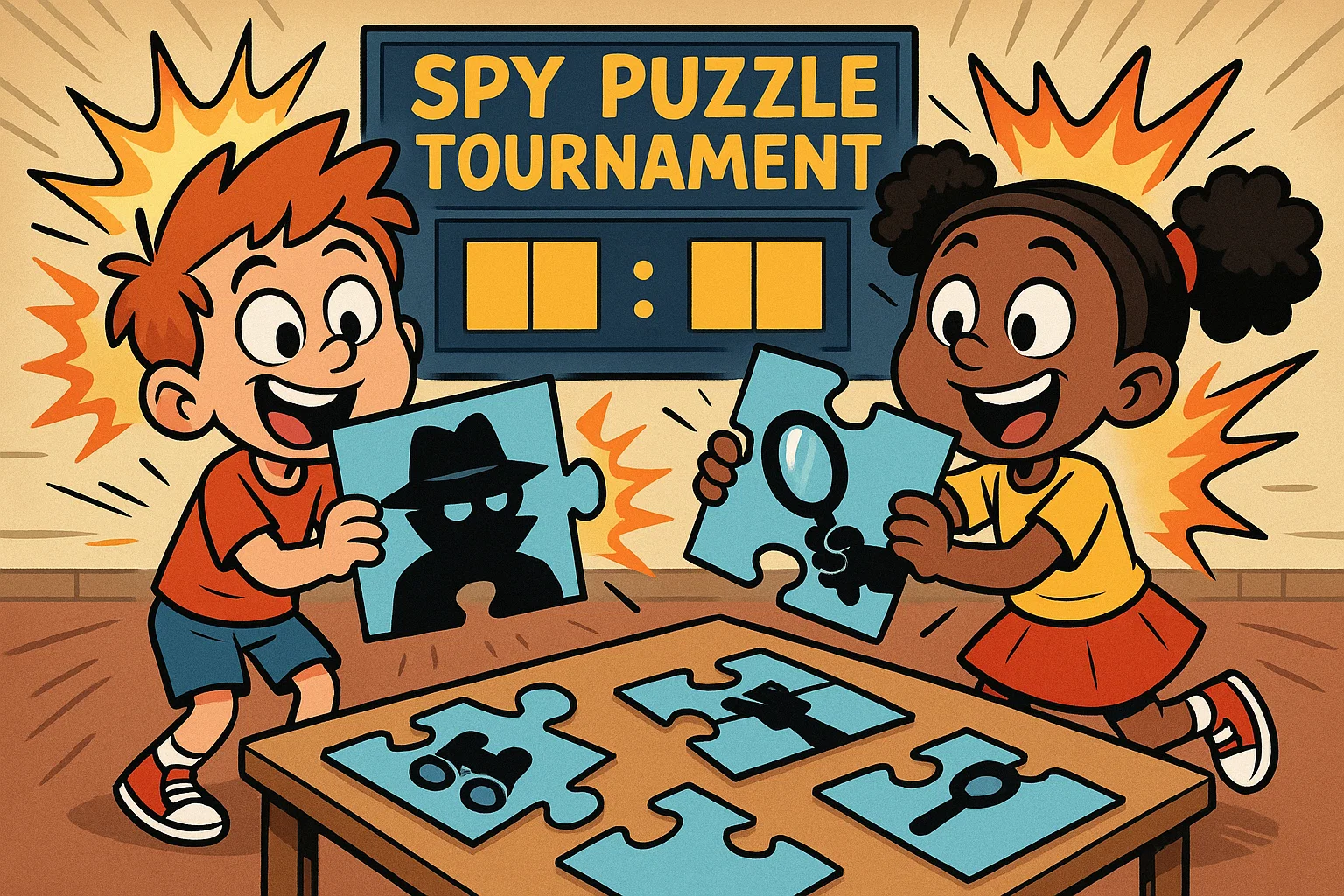
Gather various spy-themed puzzles, riddles, or brain teasers. Divide the kids into teams and have them race to solve a series of puzzles. The team that completes the puzzles first wins.
DIY Spy Gadgets and Essentials
Every great spy needs the right tools. Making your own gadgets is a fun activity in itself.
Make a Sliding Decoder
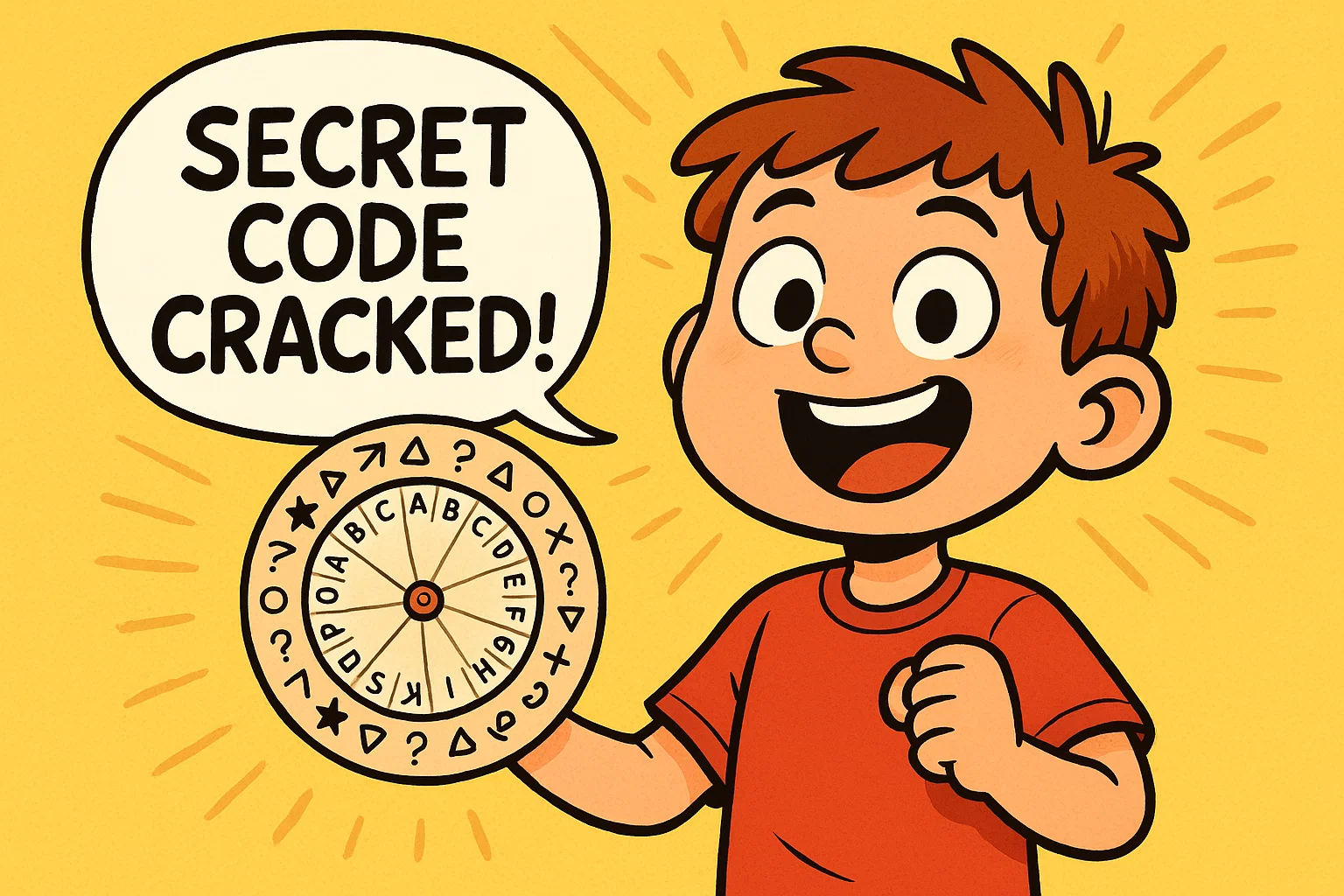
A sliding decoder, or cipher wheel, is a classic DIY spy tool. To make one, you can:
- Cut two circles of different sizes out of cardboard or thick paper.
- Write the alphabet around the edge of the larger circle.
- Write the same alphabet on the smaller circle, leaving a space at the top.
- Attach the small circle to the center of the large one with a paper fastener so it can spin.
- Align a different letter on the small wheel with the ‘A’ on the big wheel. This letter becomes your code key!
Periscope and Observation Tools
Kids can create their own periscope using two small mirrors and a shoebox. While it may not work perfectly, the process of building it teaches them about optics and angles. They can also create “binoculars” by taping two toilet paper rolls together.
Fingerprint Kit
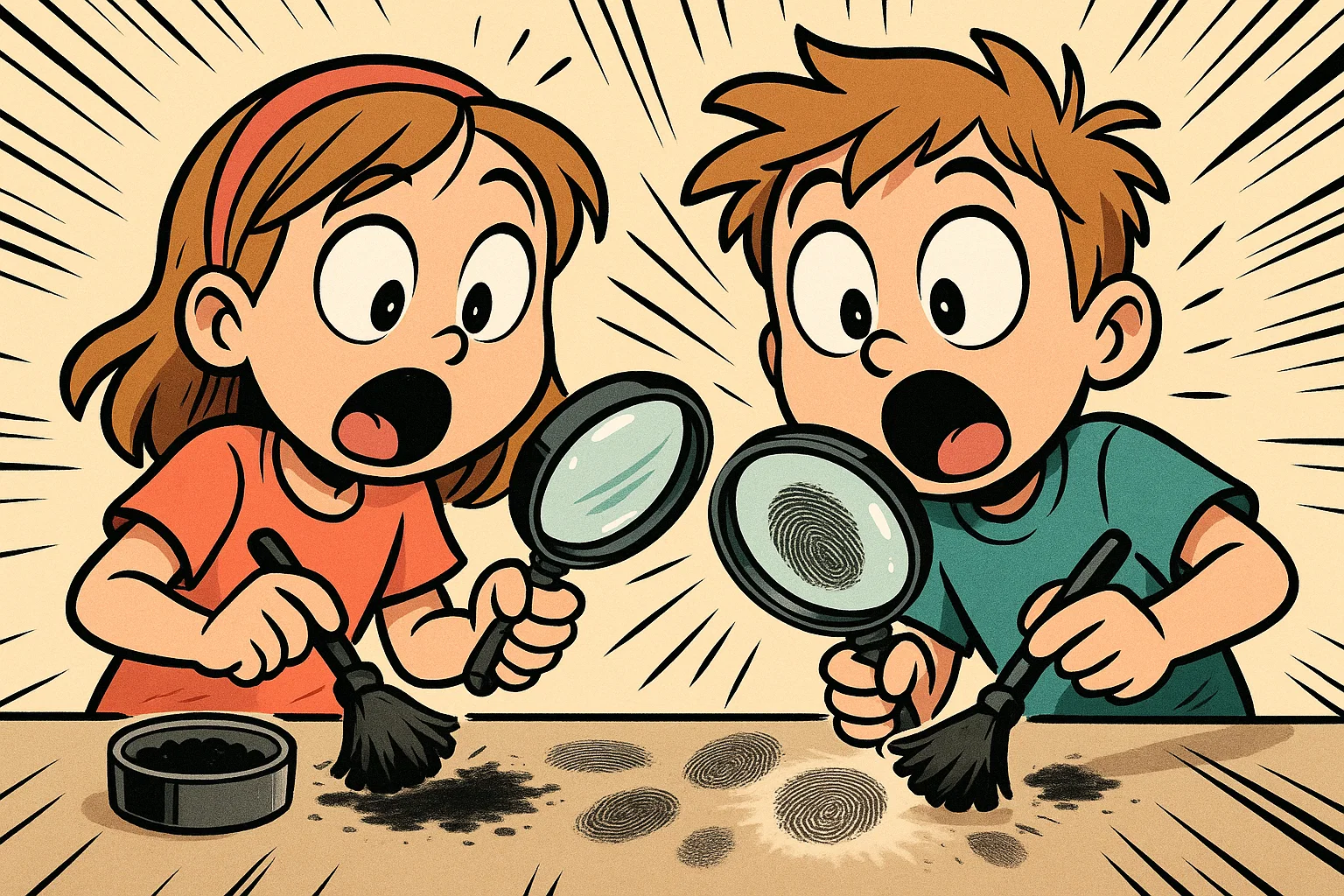
A fingerprint kit can be a fun way to feel like a real detective. Simply sprinkle some flour, cornstarch, or cocoa powder on a surface, then use a small makeup brush to lightly dust it. Place a piece of clear tape over the print and lift it to “collect” the evidence. This activity introduces the concept of forensic science.
Put Together a Detective Kit
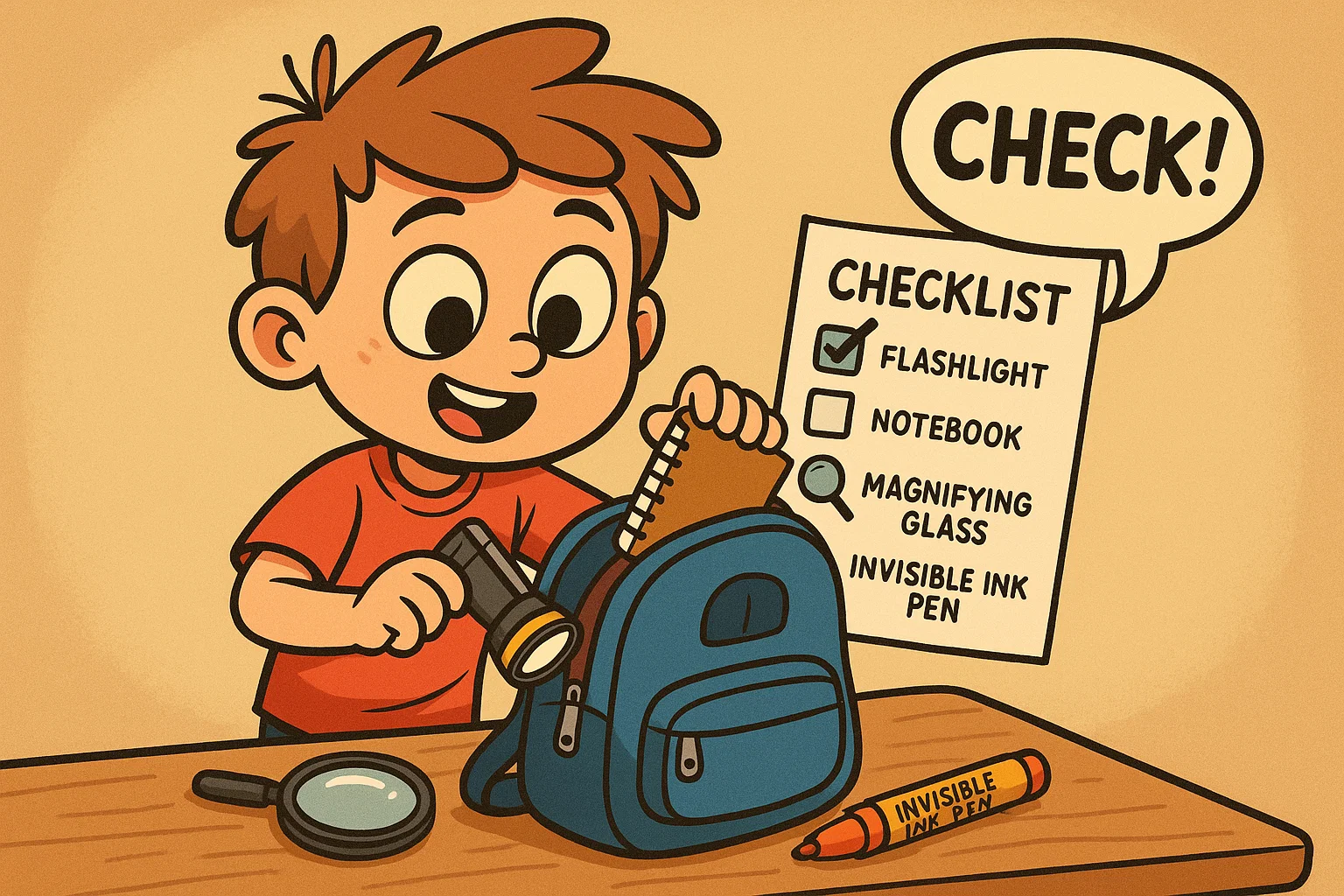
An old briefcase or a small box can be turned into a personal detective kit. Fill it with essential tools like a small notebook, a pencil, a magnifying glass, a flashlight, and maybe a pair of sunglasses for that super-spy look.
Spy Party Games for Birthdays
If you’re planning a secret agent birthday party, a well-structured series of missions can make it a huge hit.
Spy Training Obstacle Course
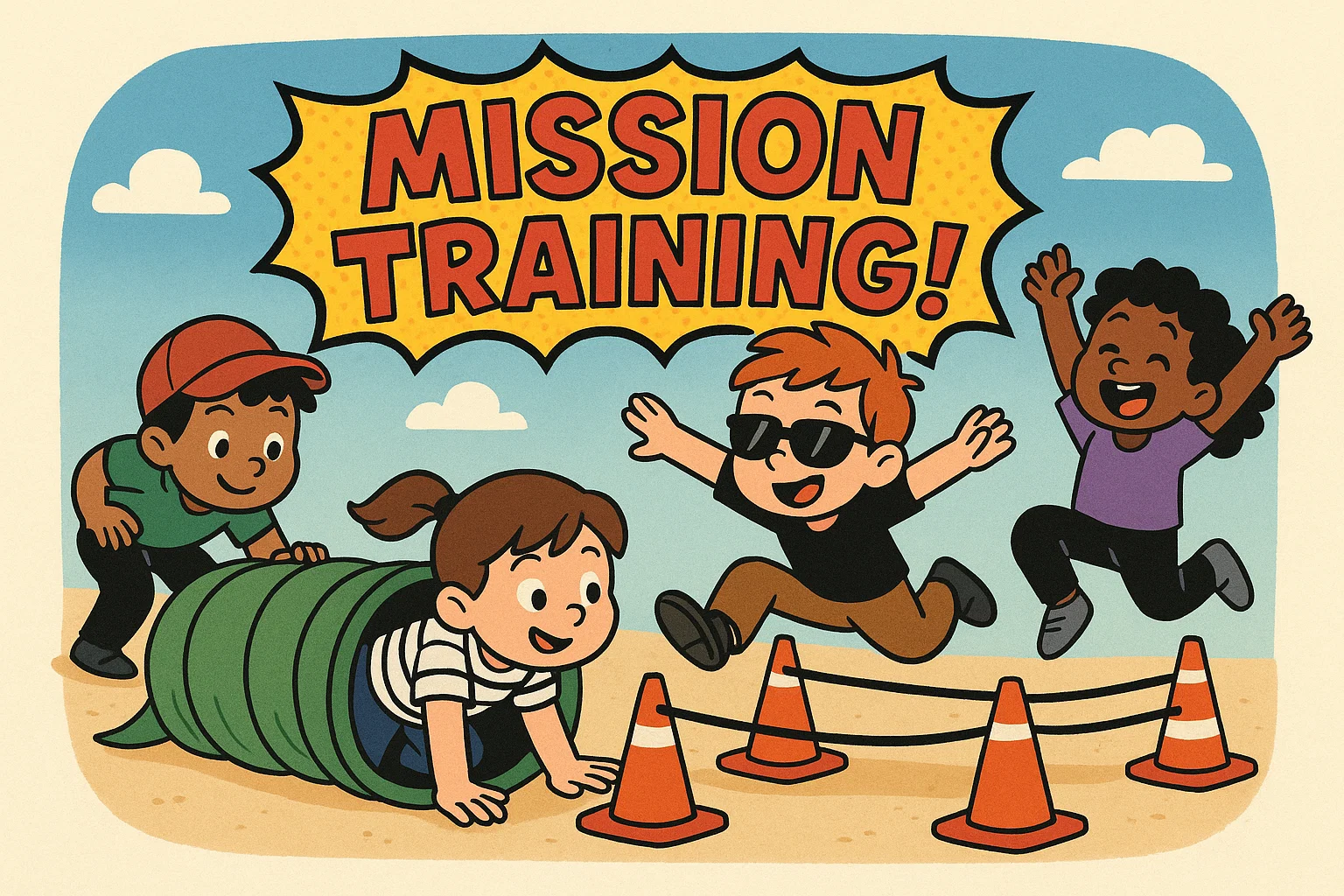
This combines physical activity with spy skills. Create stations with different challenges:
- Balance Beam: Walk across a line of tape on the floor.
- Laser Maze: Navigate a maze of yarn without touching it.
- Target Practice: Throw a soft ball at a target.
- Mission Debrief: Sit down and solve a small riddle.
Mission Briefing Role Play
Start the party by giving each child their own secret mission envelope. Inside, they’ll find their spy ID, a list of tasks, and a coded message they need to decipher. This sets the stage and gets everyone excited for the action.
Code Breaker Challenge
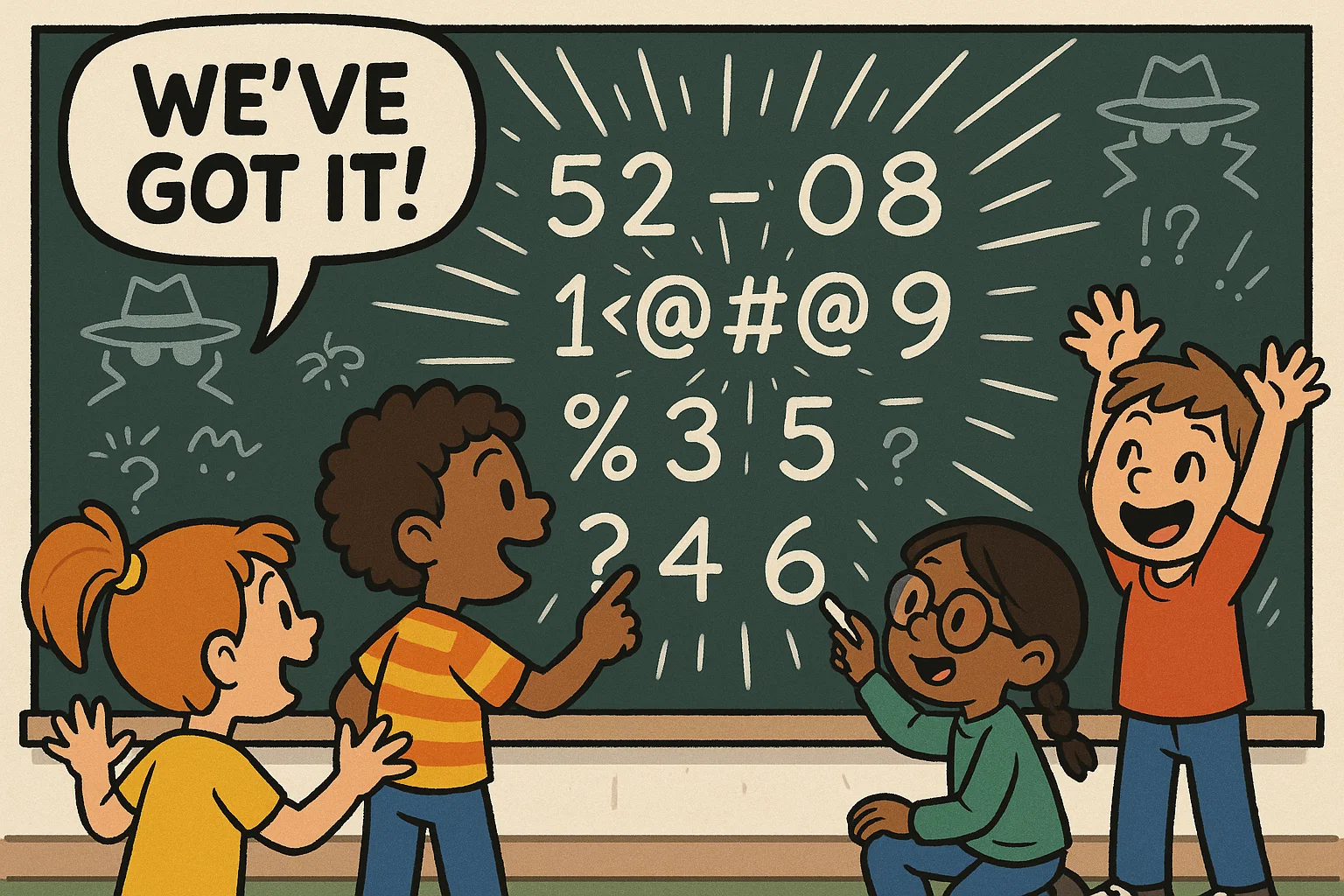
This game can be a central theme of the party. Hide a “treasure” or the birthday cake, but lock it with a box that requires a key or a combination. The kids must solve a series of riddles or complex codes hidden around the party area to get the final combination or find the hidden key.
Printable and Digital Spy Activities
For a quick activity, or to add to your existing mission, printables are a parent’s best friend.
Printable Spy ID Cards
You can find many free templates online for printable spy ID cards that you can fill out with a child’s photo, name, and agent number. These are perfect for role-playing and making kids feel like real agents.
Secret Mission Sheets
A simple mission sheet can provide a structured activity. For example, a sheet could ask them to:
- Find three red objects.
- Draw a map of the backyard.
- Decipher a simple code.
- Find a secret item and bring it back to base.
Spy Apps and Online Games
While screen-free activities are great, there are also some fantastic educational apps and online games that teach logic and problem-solving with a spy theme. These can be used as a special treat or for a quiet cool-down activity.
Tips for Organizing Spy Play
To ensure your mission goes off without a hitch, here are some practical tips for parents.
How to Organize a Spy Party at Home
- Invitations: Send out invitations that look like top-secret files.
- Decorations: Use black, red, and white balloons. Hang caution tape and use string as “laser” beams. An old briefcase can be used as the “safe” for the treasure.
- Music: Play some suspenseful movie music to set the mood.
- Setup: Have all your materials ready in different stations so you can easily move from one activity to the next.
Safety Rules for Active Games
Set clear boundaries. For example, tell kids to “walk, don’t run” for indoor activities. If you’re doing an obstacle course, make sure the area is free of tripping hazards.
Adapting Games to Group Size
For a small group, you can do a single-team mission. For a large group, it’s best to divide the kids into smaller teams with a leader for each. This encourages healthy competition and makes it easier for everyone to participate.
FAQ
What are the best spy games without screens?
Many of the best spy games are inherently screen-free. Activities like the Silent Spies, decoding a secret message, or setting up a laser maze with yarn are excellent choices that encourage active and imaginative play.
Can toddlers play spy games safely?
Yes, but the games must be simple and safe. Focus on basic concepts like finding objects, mimicking movements, and exploring textures. Avoid small items that could be choking hazards.
What do I need to organize a spy party?
You don’t need much. Essentials include printable spy ID cards, pens and paper for clues, a magnifying glass, and maybe a DIY gadget like a decoder. The most important thing is a good story or mission to get the kids excited.
How do spy games help with child development?
Playing spy games is a fantastic way to develop a variety of skills, including critical thinking, problem-solving, observation, and memory. They also encourage physical activity, teamwork, and creative expression.
